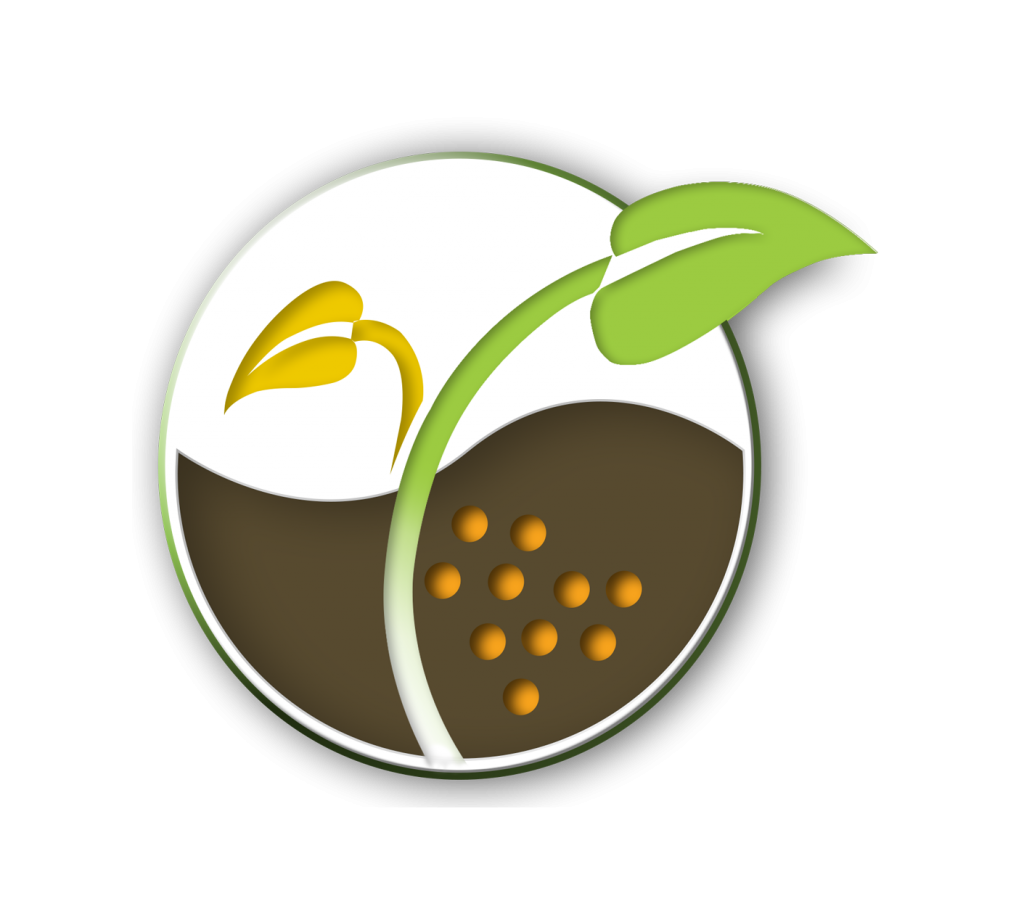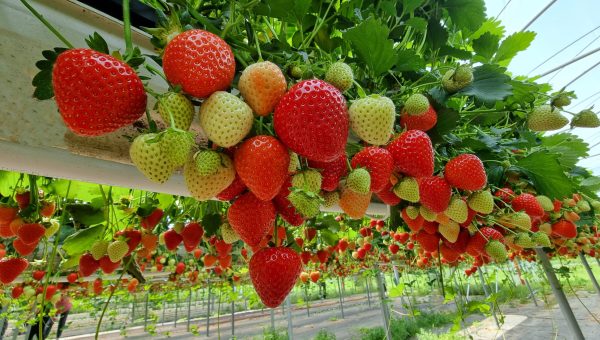Sclerotinia spp. or white mold (SCLESP)
Consequences of the attack of pathogens of the genus Sclerotinia spp. on crops:
Classification, disease cycle and distribution; integrated management and plant health.
In the genus Sclerotinia, we find fungi that have a wide host range, which makes their distribution worldwide.
The genus Sclerotinia is considered a causal agent of rotting in various crops, which is associated with great economic losses in the field of agricultural practices.
In this blog you will find all the necessary information about the phytopathogen, as well as keys for the integrated control of the disease and the use of the phytosanitary T34 Biocontrol® as a plant health measure.
Taxonomy and Distribution.
To learn more about white rot in lettuce, caused by Sclerotinia spp it is necessary to know the classification of this fungus.
Taxonomy.
Kingdom: Fungus
Division: Ascomycota
Class: Leotiomycetes
Order: Helotiales
Family: Sclerotiniaceae
Genus: Sclerotinia
Species: Sclerotinia sclerotiorum, S. minor and S. trifoliorum
Geographic Distribution.
The genus Sclerotinia spp. is a pathogen of wide global distribution, present in practically all continents and affecting more than 500 plant species, including crops of high economic value. Its ability to adapt to different climatic conditions and soil types makes it a significant threat to agricultural production in various regions of the world.
The most relevant species, such as Sclerotinia sclerotiorum and Sclerotinia minor, have been reported in temperate and subtropical climates, where high humidity and moderate temperatures favor their development. This fungus is especially problematic in horticultural crops such as lettuce, tomato and sunflower, as well as in extensive crops such as soybean and rapeseed. Its persistence in the soil by means of sclerotia allows it to survive for long periods in the absence of a host, which makes it difficult to control and facilitates its global dispersal through contaminated seeds, soil and plant debris.
The economic impact of Sclerotinia spp. is considerable, since it can cause significant losses in yield and crop quality. Therefore, its study and integrated management are essential to reduce its incidence and minimize its negative effects on agricultural production.


Sclerotinia sclerotiorum ERD-8356. Spores x 1.000. Photo: Enrique Rubio.
Center for Asturian Mycological Studies link
2. Crops affected by this disease.
These are necrotrophic necrotrophic fungi which affect a wide variety of crops including the lettuce, cabbage, tobacco, sunflower, potato, alfalfa, carrot, celery, cucumber, eggplant, legumes, tomatoes and melons, among others..
Within the species of the genus Sclerotinia the causal agents of some plant diseases, such as the White moldthe so-called damping-off (fungal wilt) or the disease known as “fungal wilt” (fungal wilt) or the disease known as “fungal wilt” (fungal wilt).Dollar Spot” (Sclerotinia homeocarpa).
It should also be clarified that fungal wilt fungal wilt is not only caused by this fungus, but also by species of the genus Phytophthora, Rhizoctonia, Botrytis y Pythium are also related to this disease.



NECROTROPHIC FUNGI
Necrotrophic fungi are a type of plant pathogen that infect and destroy plant tissues by secreting toxic compounds, hydrolytic enzymes and other metabolites that cause programmed cell death or necrosis in the plant. Once the cells die, these fungi degrade the tissues and absorb the released nutrients, thus completing their life cycle.
Unlike biotrophic fungi, which depend on the survival of the host cell for nutrients, necrotrophic fungi do not establish symbiotic relationships with the plant, but invade aggressively and develop on decaying plant material. Among the most representative examples of necrotrophic fungi are Botrytis cinerea (causing gray rot), Sclerotinia sclerotiorum and Fusarium spp. all of which are responsible for severe diseases in agricultural crops of great economic importance.

3. Symptoms and signs.
The white mold is a disease that can occur in multiple crops crops whether vegetables, fruits or ornamentals, generally caused by S. sclerotiorum y/ or S. minor . El moho blanco también es conocido como “ soft rot ” o “ Neck rot “.
La enfermedad se identifica por una coloración parduzca temprana de las hojas, la planta completa se colapsa haciendo imposible su recolección/cosecha.
In the final phase of the cycle, the effects of the disease can be seen in the lettuce crop, with the following symptoms wilt wilting of the leaves and the presence of a mycelium of cottony and whitish cottony and whitish mycelium on the basal part of the stem.
This mycelium produces aggregates of hyphae that produce a dark substance(melanin) from which irregular, black fruiting bodies originate, known as sclerotia. sclerotia.
White rot of lettuce is favored by low temperatures (10-20ºC) and high humidity conditions.

GLOSSARY
Mycelium The set of filaments or hyphae that constitute the thallus of fungi. It is involved in the growth, reproduction and death of the fungus(source).
Hypha: A fungal filament that forms from spores and represents the structural unit of most fungi.
Fruiting body: also called the reproductive body or sporocarp, is the part of the fungus that performs reproductive functions and is the sexual part of filamentous fungi(source).
Sclerotium: a fungal structure of hard consistency, developed as a form of resistance to unfavorable conditions(source).

4. Disease Cycle.
White rot of lettuce is a monocyclic disease of lettuce monocyclic disease The plant has only primary infection and once the plant tissue has become diseased, it is no longer contagious. This means that the pathogen does not produce spores or secondary inoculum during the growing season . Plant to plant spread can occur very exceptionally, which rarely happens.

The disease cycle starts in the soil when the resting structures, sclerotia begin the process of germination which has two phases:
1. CARPOGENIC, Appearance of ascospores
ascospores appear
which are collected in the
apothecia
the dispersion will be through the wind. Represents the The most common way of infection is in situations of prolonged leaf wetness and temperatures between 12 and 24ºC.
2. MICELIOGENIC, the sclerotium develops a mycelium that attacks the parts of the plant that are in contact with the soil surface .
The pathogen survives in soil or infected tissues, in the form of sclerotia and also as mycelium on dead/living plants. During spring or early summer, the sclerotia germinate and produce slender stalks ending in a cup-shaped apothecium 5-15 mm in diameter, where ascospores are produced inside sacs (asca). A significant number of ascospores are discharged (2-3 weeks), travel by wind until they land, germinate and cause infection in weak or sensitive aerial tissues of the plant.
5. Disease management (Integrated Control).
Here are some keys to control pests and diseases whose action takes into account the balance of ecosystems and is respectful of the environment.
1. Use resistant lettuce varieties, although there are few varieties that show appreciable levels of resistance.
2. Avoid high planting densities, spacing the distance between rows, always maintaining planting densities that maximize the crop, but producing the space that generates a humid microclimate.
3. Reduce irrigation frequencies to 12 to 24 h leaf wetness periods. Water early in the morning to allow the sun to dry the leaves before noon and also keep the soil surface dry.
4. Nitrogen applications should not exceed optimum doses.
5. Good management of weeds, mainly broadleaf weeds, is important.
6. Crop rotation, in the case of this disease is a measure of little value due to the long survival periods of sclerotia and the wide range of host plants parasitized by Sclerotinia spp.
7. Burying infected residues may prevent germination of sclerotia since germination only occurs near the soil surface. However, subsequent plowing in the following season may bring the sclerotia to the surface again.
8. Key to the control of this disease is to reduce the levels of sclerotia (inoculum) in the soil and this can be achieved with treatments of
- – Solarization is a soil disinfection technique that takes advantage of solar radiation.
- – Biofumigation (because many chemical treatments are prohibited or restricted).
– Biological control is a good alternative; sclerotia are vulnerable to parasitism by microorganisms such as fungi or bacteria as described in the literature and some of them are available as authorized products against this disease for the protection of this crop.
6. Treatments with T34 Biocontrol®.
At the end of the previous section we mentioned that one of the best strategies to protect crops is to reduce soil inoculum levels and that for this there were three alternatives, one of them being the Biological Control offered by the phytopathogen T34 Biocontrol® .
Here are the three phases in which the product can (or should) be applied to achieve optimal results.
In seedbed:
- Mix T34 Biocontrol® in the growing medium (10g/m3) or spray the trays (0.5 g/m2) as a preventive control measure.
During growth:
- Apply in the irrigation system T34 Biocontrol® (250g/Ha) on the soil at sowing, as a preventive measure.
- A reminder dose (250g/Ha) after 7 days of the first application or prior to periods of maximum stress.
After harvest:
- Subsequent applications of T34 Biocontrol® can be used to parasitize plant debris and reduce sclerotia levels in the soil for the following season.
Sources:
L.A. Arias, L.A. Tautiva, W. Piedrahíta and B. Chaves. 2007. Evaluation of three methods of control of white mold (Sclerotinia sclerotiorum in lettuce (Lactuca sativa L.). Colombian Agronomy, 25.1:131-141.
Berlin, N. 1998. Biology of Sclerotinia. Department of Plant Pathology. North Dakota State University.
Agrios, G. 2005. Plant pathology. Fifth edition. Elsevier Academia Press, USA. 922 p.







